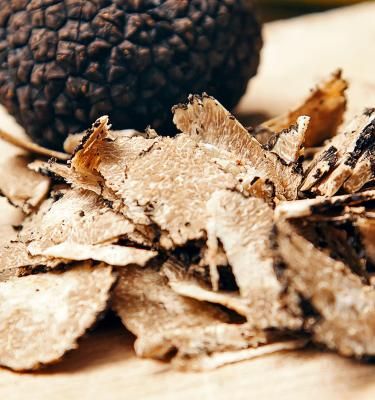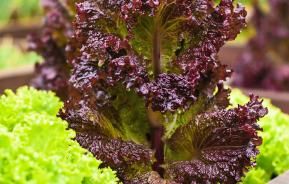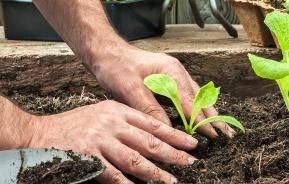Growing truffles is notoriously difficult and a lot of patience is needed, as there are no guarantees, but you can follow our guide for a successful truffle harvest to tip the balance in your favour.
What are truffles?
Unlike the chocolate variety, truffles are actually a fungus that can be found growing under the ground of trees such as oak, hazel or beech.
Traditionally the best truffles, that are nutty and earthy in flavour, are grown in southern France and Italy but certain areas in England (Hampshire, Dorset and Wiltshire) are conducive to growing these culinary delicacies.

Host trees for truffle growing
Growing truffles in the UK is quite difficult, as the truffles only like to grow in chalky or lime soils with a high pH, under the ground of their host trees, which will either be oak, hazel or beech. You should always buy a host tree seedling from a reputable supplier like The English Truffle Company, as this will ensure that the roots will have been inoculated with spores of the truffle fungus and documentation (certificate) would be provided.
The Summer or Burgundy Truffle (Tuber aestivum var uncinatum) is the species native to the UK, most suited to our cooler, wetter climate than those grown in southern France or Italy.
Planting your truffle tree
The infected seedlings should be planted in a sheltered site that has alkaline, good drainage and well-aerated soil in a sunny aspect. To achieve the optimum pH of the soil, and increase your chances of getting some truffles to grow, then it’s best to add some lime. Ideally there should be no other trees within a 75m radius, but if this is not possible then create a protective trench, at least half a metre deep and lined with polythene, that surround the seedlings.
Dig a hole double the size of the root ball and at the bottom throw in the lime, place the seedling on top, trying not to disturb the root ball, and cover without compacting the soil. Stake the seedling and protect with a poly-tube about a metre high.
Make sure you water regularly, preferably with rainwater, but ensure the ground does not become waterlogged.
How to care for your truffles
Weed regularly around the seedling using a hoe, taking care not to go too deep, as this will give just enough soil movement to aerate the ground surface. Applying a mulch can help with water regulation as well as weed control, make sure you do not use one that has been retreated with a fungicide.
Harvesting
Don’t expect truffles to appear in the first year, indeed with the right care and conditions they may appear within the first 3 years, but it would be more usual to take 5-10 years for a good crop. Traditionally pigs are used to find the truffles, but increasingly dogs can be trained and used to discover your truffle crop. The only indication that you have a crop to uncover, is the scent of truffle on the breeze!
Your harvested truffles could fetch anywhere from £10 all the way up to £165,000 per truffle!

Storing your truffles
Truffles should really be consumed the same day of harvest, as they have a short shelf life, but if stored correctly will last 1-2 weeks. There are a couple ways to store them:
- Make sure the truffles are clean and dry, place them in either a plastic or glass container that is air tight, lining it with kitchen towel. Place on the top shelf of your fridge and check them daily and wipe off any condensation or white mould (harmless), also change the kitchen towel.
- You can also store them as above, but either place eggs or arborio rice in with them. If stored this way, the shelf life will only be 2-3 days, but you will have eggs or rice infused with the aroma of truffle.
Have you found any truffles? Let us know @lovethegarden.








